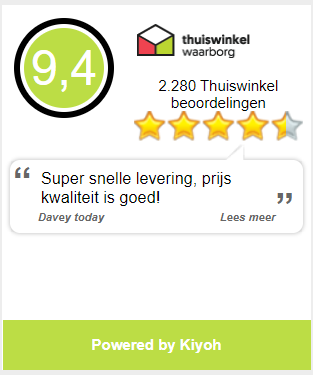Sous vide meal prep: How to save time with batch cooking, storage, and reheating
How to meal prep with sous vide: Step-by-step guide
Meal prepping with sous vide: Save time without sacrificing quality
Meal prepping has become a go-to strategy for busy people who want to eat healthy, save time, and reduce daily cooking stress. But what if you could take it to the next level, with perfectly cooked meals that retain their flavor, texture, and nutrients for days? That’s where sous vide meal prep comes in.
Sous vide, a cooking method that uses precise temperature control in a water bath, is ideal for batch cooking. Whether you're preparing lean proteins, vegetables, or complete meals, sous vide ensures they’re cooked to perfection, every time. And unlike traditional methods, sous vide cooking helps retain moisture, nutrients, and flavor, even after reheating.

Why sous vide is perfect for meal prep:
- Cook in bulk: Prepare multiple portions of chicken, beef, fish, or veggies at once
- Hands-off cooking: No stirring, flipping, or checking required
- Perfect doneness: Never overcook your meals, even if reheated
- Longer shelf life: Vacuum-sealed meals stay fresh in the fridge or freezer
- Nutrient retention: Low-temperature cooking preserves vitamins and minerals better than high heat methods
How to meal prep with sous vide: Step-by-step guide
Meal prepping with sous vide is simple once you understand the workflow. Here's how to do it efficiently, from choosing ingredients to storing and reheating.
1. Plan your meals and portions
Start by deciding which proteins or vegetables you want to prep. Great sous vide-friendly options include:
- Chicken breast or thighs
- Steak or pork chops
- Salmon or white fish
- Eggs
- Root vegetables (like carrots, sweet potatoes, or beets)
Portion your ingredients based on your meal plan, whether that’s daily lunch portions or larger family-sized dinners.
2. Season and vacuum-seal
Lightly season each portion or use a simple marinade. Then place each serving into a vacuum bag or zip-top freezer-safe bag.
Pro tip: If you want variety, use different herbs or marinades for each bag, this way, you’ll cook everything at once but enjoy different flavors during the week.
3. Sous vide all bags at once
Use a large water container to cook several bags simultaneously. Group ingredients with similar cooking temperatures (for example, chicken and vegetables can be cooked at ~65°C). Let the immersion circulator do the work, no monitoring needed.
4. Chill and store safely
Once cooked, it's important to cool the bags quickly to preserve texture and prevent bacteria growth.
Use the “cook-chill” method:
- Transfer sealed bags from the water bath to an ice bath (half water, half ice) for about 20–30 minutes
- Then store the bags in the refrigerator or freezer
How long can you store sous vide meal prep, and where?
One of the biggest benefits of meal prepping with sous vide is the extended shelf life and food safety, when stored properly. Whether you’re refrigerating for the week or freezing for longer-term use, sous vide helps keep your food fresh, flavorful, and safe to eat.
Store in the refrigerator (short-term)
After sous vide cooking and rapid chilling (via ice bath), you can store vacuum-sealed meals in the refrigerator for up to 7 days, depending on the ingredients.
Best practices:
- Keep your fridge at or below 4°C (40°F)
- Store meals in vacuum-sealed bags for maximum freshness
- Label each bag with the cooking date and contents
Examples of fridge shelf life (after cook & chill):
| Ingredient | Safe Fridge Storage Time |
| Chicken breast | 5–7 days |
| Steak or pork | 5–6 days |
| Cooked veggies | 4–5 days |
| Sous vide eggs | 5–7 days |
Store in the freezer (long-term)
For longer meal prep storage, freezing sous vide-cooked meals is highly effective. Properly sealed and chilled meals can be stored in the freezer for a longer time with little to no loss in flavor or texture.
Tips for freezer storage:
- Always use vacuum-sealed or heavy-duty freezer bags
- Chill the bags in an ice bath before freezing
- Lay bags flat in the freezer to save space and speed up thawing later
Bonus: You can also prep raw meals, vacuum seal them with seasonings, and freeze them before sous vide cooking. When you're ready, cook straight from frozen—just add extra time to your sous vide bath (typically 30–60 minutes more).
How to reheat sous vide meal prep the right way
One of the key advantages of sous vide meal prep is that reheating is incredibly simple, and unlike traditional reheating methods, it doesn’t dry out or overcook your food. Whether your meals are stored in the fridge or freezer, sous vide lets you reheat them gently while preserving their original texture and flavor.
Reheat with sous vide (best method)
To reheat your meal-prepped food, just place the vacuum-sealed bag back into a sous vide water bath and bring it up to serving temperature.
How to do it:
- Fill your container with water and set the sous vide circulator to a temperature 5–10°C lower than the original cook temperature.
- Place the sealed bag directly in the bath (no need to open it).
- Reheat for 30–60 minutes, depending on the size and thickness of the food.
Example:
- Chicken breast originally cooked at 65°C → reheat at 55–60°C
- Steak originally cooked at 57°C → reheat at 50–52°C
This method ensures no additional cooking happens, so your food stays perfectly tender and moist.
Optional: Sear after reheating
Want that crispy crust or golden finish? After reheating, take your food out of the bag, pat it dry with a paper towel, and give it a quick sear in a hot pan, on the grill, or with a kitchen torch.
This step adds flavor and enhances appearance, especially for steak, pork chops, or chicken.
Can you reheat sous vide meals in the microwave?
Technically yes, but it’s not recommended. Microwaves heat unevenly and can ruin the texture of sous vide-cooked proteins. If you're in a rush:
- Transfer the food to a microwave-safe container
- Cover it loosely
- Use short, low-power bursts (30–40% power)
- Check frequently to avoid overcooking
Still, a sous vide bath is the safest and best way to reheat meal-prepped food while maintaining its quality.
Reheating from frozen
You can also reheat frozen sous vide meals without thawing:
- Set the water bath to the original cook temperature
- Add an extra 30–60 minutes to the usual reheat time
- Make sure the bag is fully submerged for even heating
Conclusion: Why sous vide is the ultimate tool for meal prep
Sous vide isn’t just a technique for gourmet chefs, it’s a powerful tool for anyone looking to simplify weekly cooking without sacrificing quality. By combining precision cooking with long shelf life, nutrient retention, and stress-free reheating, sous vide makes meal prep easier, tastier, and more efficient than ever before.
Whether you're batch-cooking chicken breasts, prepping veggies, or freezing fully cooked meals for later, sous vide allows you to:
- Cook multiple portions at once
- Lock in flavor and moisture
- Store meals safely in the fridge or freezer
- Reheat perfectly, without drying out or overcooking
Once you try sous vide for meal prep, you’ll wonder how you ever managed without it.
Ready to get started?
Explore our Sous Vide sticks, Vacuum Sealers, and vacuum bags and make every weeknight easier with perfectly prepped meals.
Need inspiration? Check out our Sous Vide Recipe Library for easy, delicious meal prep ideas the whole family will love.



